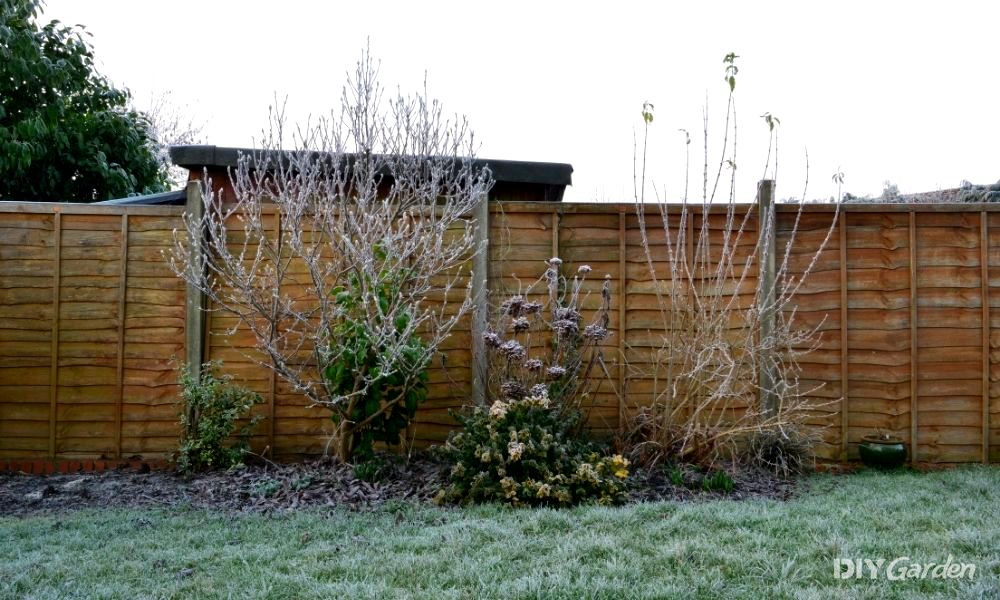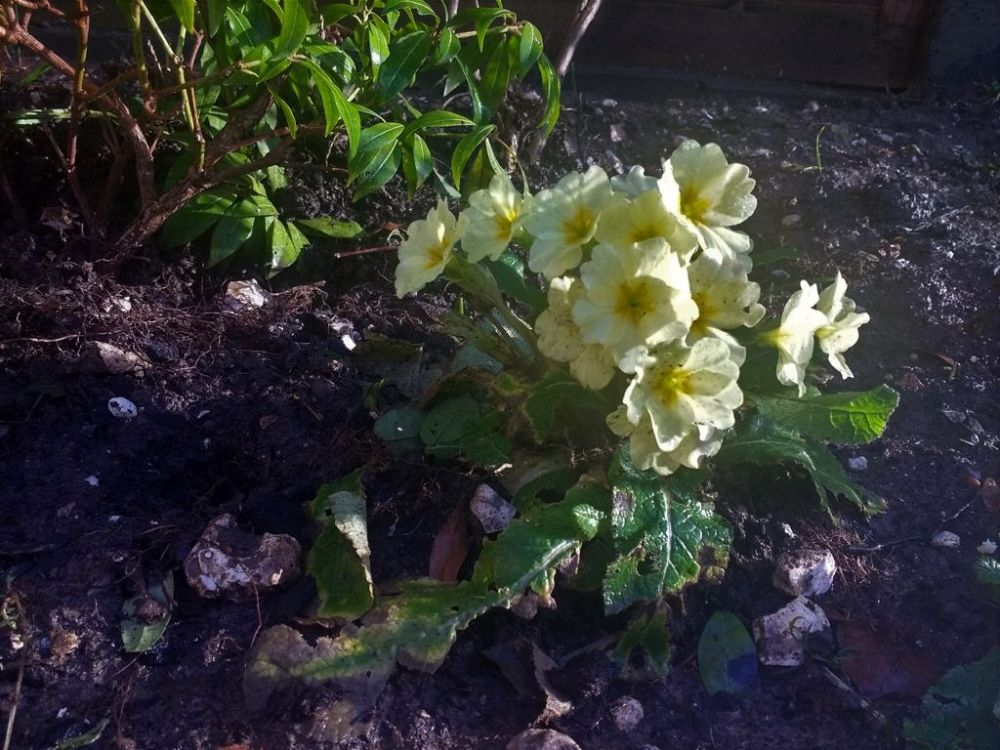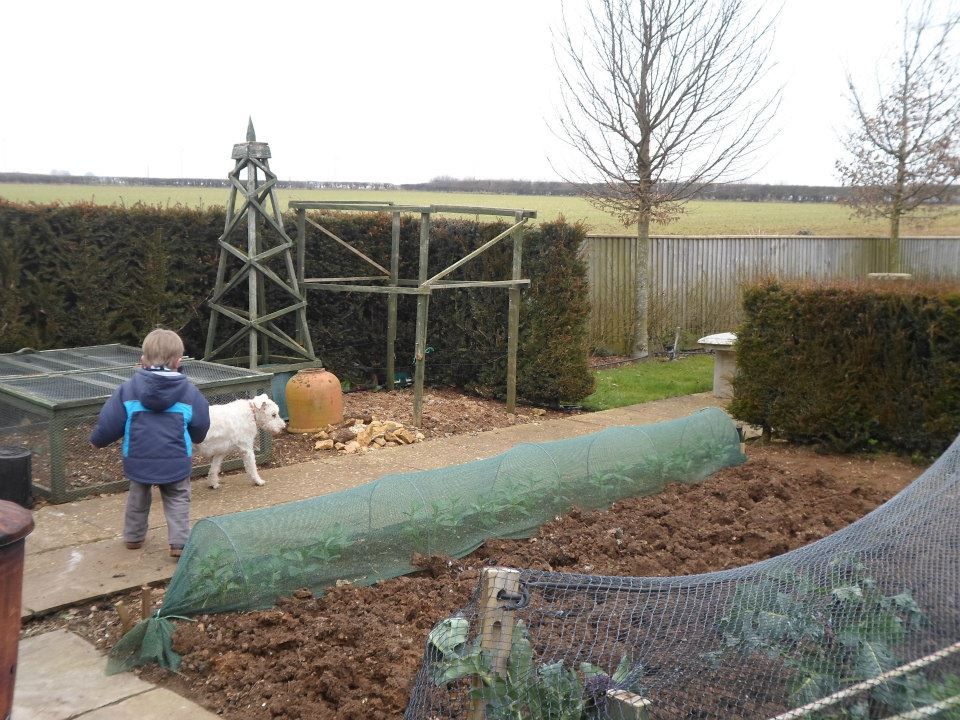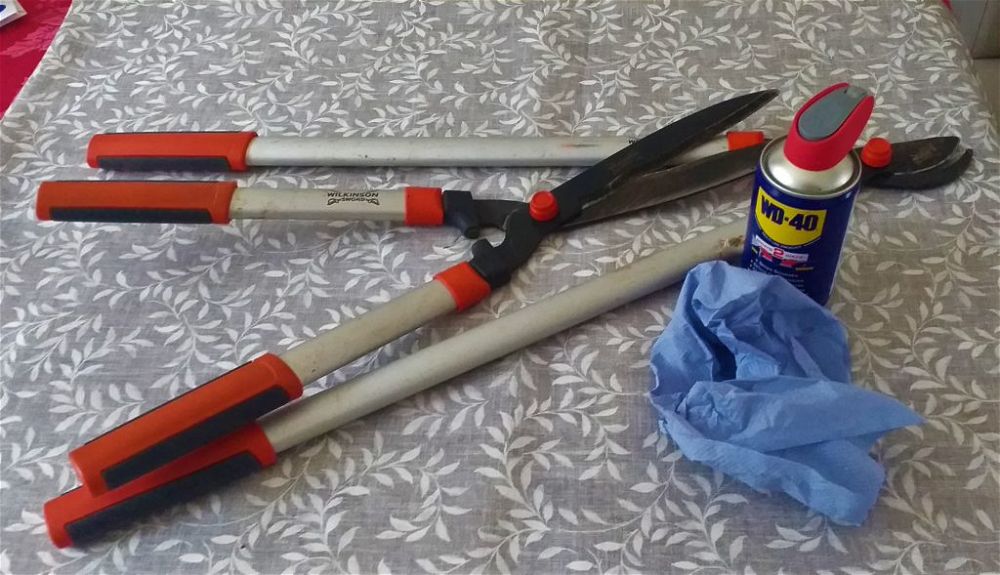
Welcome to 2022 – another year of gardening awaits us as the days lengthen and the garden starts to grow.
January is generally about preparation. Planning and getting the garden ready for a new season is the main job.
What To Do With Veggies In January
January is the time to get the soil ready for the sowing season. Unless you’re a no-dig fan, it’s a good time to double dig your empty veggie patch.
Double digging is a way of breaking up soil that’s below the reach of a single spade length. You’re digging double the depth of a spade hence the name ‘double-dig’. It’s a good thing because it helps roots reach further into the soil for water and nutrients.
The best way is to dig a trench, placing a spade’s depth of soil to one side. Then put some organic matter in that trench and dig in the organic matter to another spade’s depth.
Continue digging trenches until the area is complete. Fill in your second trench with the first trench’s topsoil and so on.
It’s hard work and many tea breaks are needed. Be sure to wear non-slip footwear because it’s wet and slippery out there.
Double digging with added fertiliser will really boost the quality of your veg this year. If you’ve still got energy left after that here are some other January veggie jobs.
- Give spring cabbages a high nitrogen feed to boost their leaves
- Pop a bucket over rhubarb crowns to force some delicate tasty stems in February
- Apply glue bands to fruit trees. Glue bands stop crawling insects laying eggs in the branches. Last year I used a really thick layer of Vaseline and that seemed to work well
- Prune fruit trees if you haven’t done so yet.
And here’s an armchair job – plan your rotations.
Whether you have a plot or raised beds it’s a good idea to grow different types of veg to last year.
So, if you grew runner beans in one spot, be sure to grow cabbages or spuds there this year. This helps the soil replenish and any plant-specific disease time to die off.
Here’s the traditional three-year rotation. You’ll need to divide your growing space into three areas starting this year and carry it forward.
2022
Space 1: Potatoes
Space 2: Beans, peas, onions and roots
Space 3: Brassicas
2023
Space 1: Beans, peas, onions and roots
Space 2: Brassicas
Space 3: Potatoes
2024
Space 1: Brassicas
Space 2: Potatoes
Space 3: Beans, peas onions and roots
If you’re not that organised, simply shift bits around so you’re growing something with lots of leaves where you had roots last time. You should still add lots of manure, but if pests were a problem last year, such as clubroot or carrot fly, it’ll help end the cycle.
What To Do With Flowers In January
It’s the new year but it’s still freezing and wet! Outdoor pot plants need protection because their roots are not protected by a thick layer of soil.
Wrap pots in bubble wrap and cover plants with fleece for extra protection where necessary. It’ll really help if you group pots next to the house for shelter and a bit of the central heating’s warmth.
Cuttings
Have you ever taken a cutting? It’s good fun and increases your plant collection for free.
Winter is a good time to take cuttings from hardwood plants like willow, viburnum and forsythia.
Cut just above a nodule and push the bare stem into a pot of gritty compost. You know it’s taken when new leaves appear in spring. If it doesn’t work then no worries – you’ve lost nothing. Don’t be afraid to try.
Deadheading
Deadhead winter pansies and any foliage you spot that’s looking worse for wear.
Uncovering smaller plants from under a blanket of leaves will encourage air circulation and stop them from going mouldy. Alpines are particularly susceptible. Pop the fallen leaves in a corner for wildlife to enjoy.
My primroses have got confused – it’s January not April! Flowers blooming at odd times year certainly brings home how our weather patterns are changing.
Prune
Winter is the best time to prune roses and rhododendrons. Cut branches back to just above a bud and remove any that are dead, damaged or crossed.
Ornamental grasses can be clipped back now. Cut away the old foliage down to a few centimetres and leave the grass in a corner of the garden. Last year blue tits took my Festuca clippings and I found them wound into a perfect little nest when I cleaned out the nesting boxes. It was really beautiful.
What To Plant In January
Bare Root
I keep on about bare root plants, but I honestly believe they are such good value. I bought Siberica dogwood shrubs for £1.49 each last month. They were £29.99 in the garden centre last spring. You can plant bare roots straight into the garden if it’s not frosty.
Snowdrops
Snowdrops are one of my absolute favourites and if you like them too, why not start your own colony?
Don’t bother with snowdrop bulbs because they’re well known as duds. Instead, buy them ‘in the green’. This means live plants. You’ll only need a few as they spread beneath the soil. Snowdrops are a really welcome pop of colour in these dreary months.
Mistletoe
If you have mistletoe left over pop on some gloves and press the seeds onto a tree branch. Mistletoe is a parasitic plant that grows on trees. It’s usually spread through bird droppings, but you can try too.
Move Plants
If the ground is soft enough, move any plants you thought were in the wrong place last year.
Order Seeds
Order up your seed potatoes, onion, and shallots. I always grow Foremost potatoes. They’ve been around 50 years and make amazing chips.
When seed potatoes arrive put them in an egg box on the windowsill to encourage chits. This gets them off to a good start when you plant them out.
Order your seeds too. It’s sweet peas for me! I harvested last year’s seeds and always buy a few packets in case the ones I’ve collected don’t take.
Sweet pea seeds can go in straight away, they aren’t afraid of the cold – but cover them because birds will have them out.
How to Tend to Your Lawn And Hedges in January
There’s not much to do with the lawns and hedges.
Try to avoid walking on your lawn if it’s wet, frosty, or snowed on as it damages the grass beneath and creates mud areas that require re-seeding. If it’s dry enough why not aerate it and maybe give it a quick mow with high blades.
Hedges can be left alone, but if you feel perky and the sun is out a little trim won’t hurt.
How to Help Out Wildlife in January
January is a lean month for birds.
Sometimes it gets so cold and they have so little food they just die in their sleep. Be a superhero and put out seeds or fat balls with a tray of water. Water is always needed because windy days dry out puddles.
Try to melt ice on cold days. I’ve seen robins and blue tits hopping across my birdbaths trying to get a drink on frosty mornings. It seems only the magpies can smash through the ice with their impressive face knives!
Put up some birdhouses too because even if they don’t nest in them, you’ll find birds sleep there overnight to keep warm. Early risers may see songbirds exiting birdhouses they thought were unused. A sturdy birdhouse is the perfect sleeping spot for little songbirds.
Hedgehogs are still out in abundance. I put out two cereal bowls of Go Cat at night and it’s eaten by morning. The amount of hog poo is astounding.
Out of my 9 hedgehog boxes, I have three permanent residents and two boxes that are used on occasion.
Little hogs that are smaller than a fist may need extra help. If you spot one bring it inside and pop it on a hot water bottle in a tall cardboard box before calling a rescue for advice.
Here’s a sleepy small hog drinking in my garden.
How to Deal With Garden Pests in January
The main garden pests now are pigeons. It’s worth netting your greens, but do check for trapped wildlife each morning.
Mould and mildew are plant enemies at this time of year too. Cut back any foliage that traps rain and rot to increase air circulation
Tending to Patios, Decks, and Garden Furniture in January
January is a quiet time for patios, decks, and furniture.
At the very least keep them clear of fallen leaves and slippery patches. Use a leaf blower and a pressure washer if you have them or get a bucket of soapy water and a tough scrubbing brush.
Keeping the decks clear in winter saves a real headache of a job in spring.
If we have snow, remove it from greenhouse or cold frame roofs because it gets heavy enough to break the glass. Shake the majority from your bushes such as roses, hydrangea, and spirea too because heavy snow can snap their branches.
Clean Your Tools
If you can’t face cleaning the patio clean up your tools instead. Wipe them all down with a damp cloth, dry thoroughly, sharpen if necessary, and oil the joints. I use WD40 but my father uses sunflower oil which seems to work just as well!
It’s a good time to service the lawnmower too. Check out your local magazines or advertising boards for someone that services lawnmowers if yours is in need of an overhaul.
Have You Still Got A Tree To Dispose Of?
If you have the space Christmas trees make an excellent dead hedge refuge for hedgehogs, beetles, bugs and all kinds of native wildlife.
You can lie a tree down at the base of an existing hedge or strip it down and use the branches to create a tight-knit hedge that slowly decomposes.
I’m going to do this with my tree and I’ll post the results in a future newsletter. If you’re really keen ask your neighbours for their trees and make a wildlife-friendly hedgerow.
An alternative way to reuse your tree is to cut off the branches, strip them down and use them as pea sticks.
Happy New Year!
Cheers – and here’s to another year of successful and unsuccessful growing!
We’ll be online showing you our tips, tricks, and no doubt disasters too so take a look around for some new 2022 ideas.






